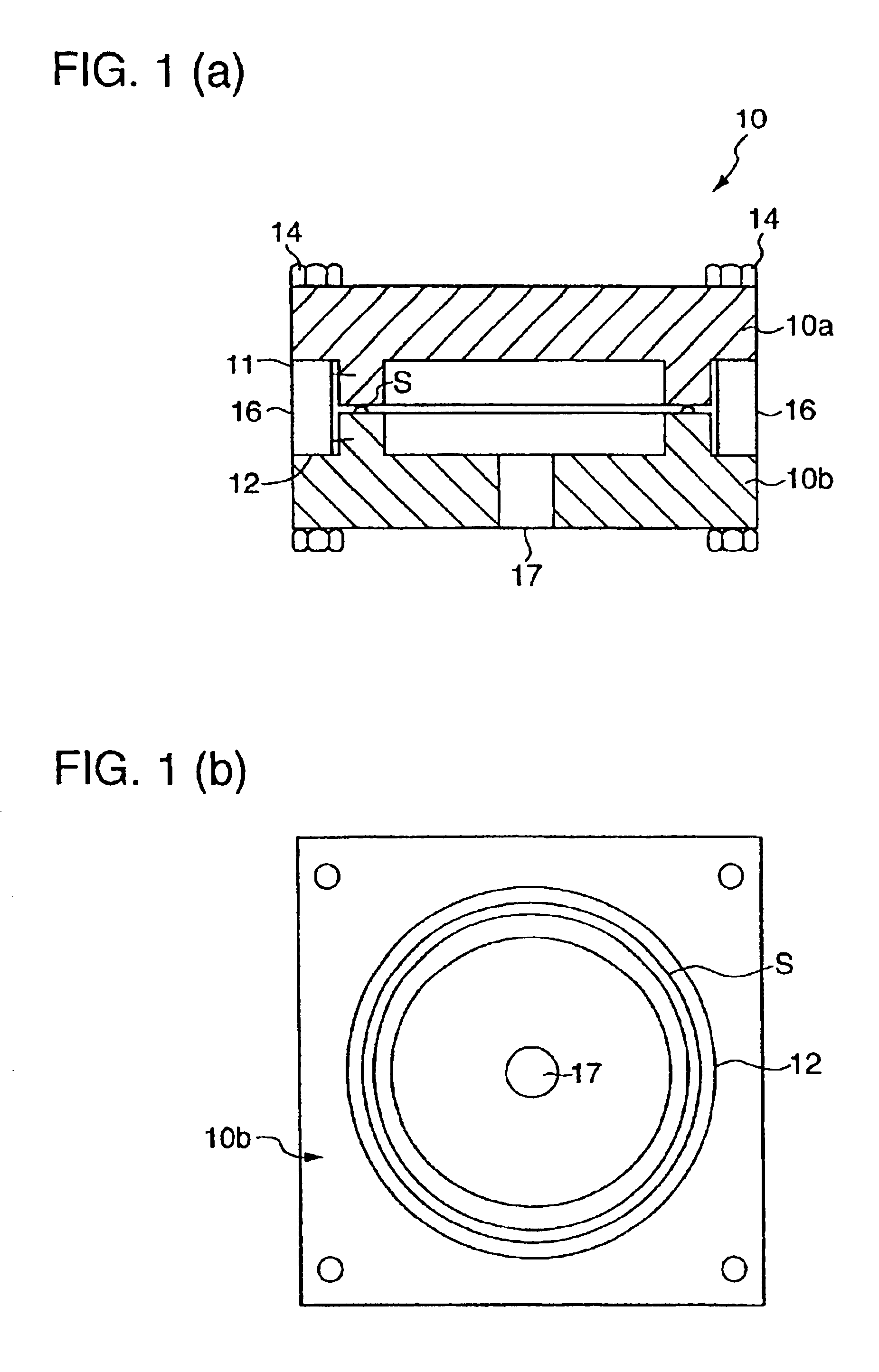Method for sealing rocker cover
a rocker cover and sealing technology, applied in the field of methods, can solve the problems of poor surface smoothness and sealing performance, complicated management of parts, and difficulty in automating the process of inserting a pre-formed gasket between the rocker cover and the cylinder block, and achieve the effect of reducing sweating phenomenon, easy manufacturing, and reducing sweating phenomenon
- Summary
- Abstract
- Description
- Claims
- Application Information
AI Technical Summary
Benefits of technology
Problems solved by technology
Method used
Image
Examples
example 1
[0034]To 100 parts of dimethyl polysiloxane of a viscosity of 1000 cs with both ends sealed with a dimethyl vinyl siloxy group (vinyl group content 0.000125 mol / g, number of vinyl groups in 1 molecule: 2, average number of dimethyl siloxane units interposed between vinyl groups: 216), 20 parts of fumed silica with a specific surface area of 300 m2 / g, 60 parts of magnesium carbonate having a surface treated with partial hydrolyzate of tetraalkoxy silane, 6 parts of hexamethyl disilazane, and 3 parts of water were added in a kneader-mixer and stirred for 3 hours, and a rubber compound was obtained.
[0035]To this, further, 2.18 parts of a straight-chain dimethylsiloxane-methylhydrogen siloxane copolymer having 10 silicon atoms, 4 hydrogen groups, and a methyl group, 0.1 part of a 1% isopropyl alcohol solution of platino-chloric acid, and 0.1 part of ethyl cyclohexanol as a reaction suppressant were added and mixed uniformly, and a silicone composition was obtained.
[0036]An experiment wa...
example 2
[0041]To 100 parts of dimethyl polysiloxane of a viscosity of 1000 cs with both ends sealed with a dimethyl vinyl siloxy group (vinyl group content 0.000125 mol / g, number of vinyl groups in 1 molecule: 2, average number of dimethyl siloxane units interposed between vinyl groups: 216), 10 parts of fumed silica with a specific surface area of 300 m2 / g, 90 parts of magnesium carbonate having a surface treated with partial hydrolyzate of tetraalkoxy silane, 6 parts of hexamethyl disilazane, and 3 parts of water were added in a kneader-mixer and stirred for 3 hours, and a rubber compound was obtained.
[0042]To this, further, 2.18 parts of a straight-chain dimethylsiloxane-methylhydrogen siloxane copolymer having 10 silicon atoms, 4 hydrogen groups, and a methyl group, 0.1 part of a 1% isopropyl alcohol solution of platino-chloric acid, and 0.1 part of ethyl cyclohexanol as a reaction suppressant were added and mixed uniformly, and a silicone composition was obtained.
[0043]This composition...
example 3
[0045]The silicone composition used in Example 1 was formed using the dummy flange just as in Example 1, and a sealing agent of the same bead shape as in Example 1 was obtained. Upon measuring the hardness of the cured sealing agent, and it was 63 with the type A durometer.
[0046]Just as in Example 1, it was pressed so that the flange surface interval became 2.2 mm. At this time, the sealing agent was compressed about 20%. Also as in Example 1, it was filled with engine oil and put in a heating oven, and an acceleration test was conducted. After heating, neither engine oil leakage nor the sweating phenomenon was found to occur. Further, white powder was sprinkled over the junction of the rocker cover and the cylinder block of the engine. The sweating phenomenon was confirmed but the white powder did not adhere to the surface of the sealing agent.
PUM
| Property | Measurement | Unit |
|---|---|---|
| specific surface area | aaaaa | aaaaa |
| height | aaaaa | aaaaa |
| specific surface area | aaaaa | aaaaa |
Abstract
Description
Claims
Application Information
 Login to View More
Login to View More - R&D
- Intellectual Property
- Life Sciences
- Materials
- Tech Scout
- Unparalleled Data Quality
- Higher Quality Content
- 60% Fewer Hallucinations
Browse by: Latest US Patents, China's latest patents, Technical Efficacy Thesaurus, Application Domain, Technology Topic, Popular Technical Reports.
© 2025 PatSnap. All rights reserved.Legal|Privacy policy|Modern Slavery Act Transparency Statement|Sitemap|About US| Contact US: help@patsnap.com

